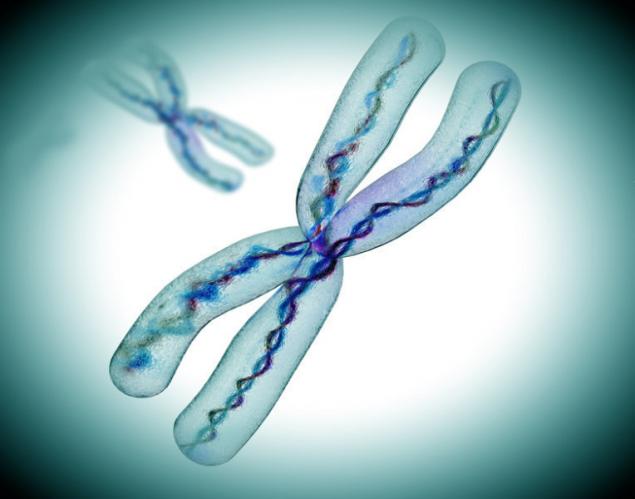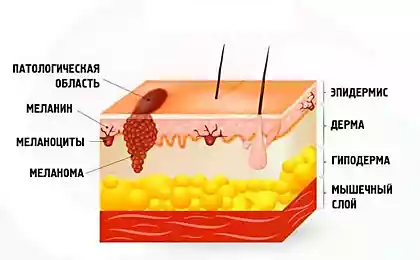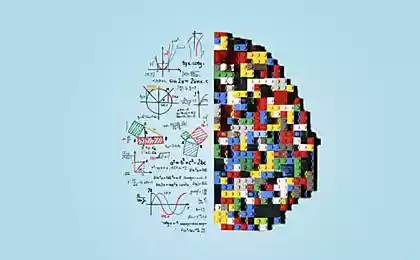542
Why the X chromosome has no genes "household"
Men have only one copy of the X chromosome, women have two. On the X-chromosome few genes, so they are expressed only in a small number of tissues. In 2002, the researchers showed that the X chromosome contains a very small number of genes of the 'household' genes involved in basic cellular functions.
Researchers from the University of Bath (University of Bath, UK) and Uppsala University (Uppsala University, Sweden), together with scientists from the FANTOM consortium found out why. The results of the study were published in the journal PLoS Biology.
The researchers analyzed the world's largest database on gene activity (expression) and compared the activity of the X chromosome with the activity of other chromosomes. The results showed that the peak expression level of genes in the X chromosome two times less than in the other chromosomes, which in humans operate from two copies.

The form of the X chromosome under a microscope (archival photo). photo: © Giovanni Cancemi / Fotolia
"While most chromosomes work in pairs, i.e. in each cell there are two copies of the gene on each chromosome, the X chromosome is active only one copy. This means that very active genes are not sustainable if they will be located on the X chromosome. The genes of the 'household' is usually very active, so they are unable to survive on the X chromosome," says study leader Professor Laurence Hurst (Laurence Hurst), Director of the Center for the evolution of Milner (Milner Centre for Evolution), based at the Department of biology and biochemistry University of Bath.
The research team also identified genes that during evolution migrated from X chromosomes to other chromosomes and genes that may have gone on a different evolutionary path.
Scientists have shown that genes that have migrated to the X chromosome, have a significantly lower peak rate of expression compared to genes which, on the contrary, moved from this chromosome.
The results of the study also showed that, in contrast to genes located on other chromosomes, are more actively expressed genes on the X chromosome were less likely to increase their level of expression during evolution.
The research team also demonstrated that the X chromosome has occurred, the evolutionary escape of genes that are actively expressed in peak periods. Scientists have suggested that these genes may not function on the X chromosome, because the cell has only one active copy.
For example, genes that are active in tissues such as pancreas, secreting a number of hormones that are less common on the X chromosome compared to autosomes.
The study has important implications for new medical treatments such as gene therapy. The results suggest that the replacement genes should not be placed in the X chromosome, because the "limited traffic" can reduce expression of the gene.published
P. S. And remember, only by changing their consumption — together we change the world! ©
Join us in Facebook , Vkontakte, Odnoklassniki
Source: cbio.ru/page/43/id/5865/
Researchers from the University of Bath (University of Bath, UK) and Uppsala University (Uppsala University, Sweden), together with scientists from the FANTOM consortium found out why. The results of the study were published in the journal PLoS Biology.
The researchers analyzed the world's largest database on gene activity (expression) and compared the activity of the X chromosome with the activity of other chromosomes. The results showed that the peak expression level of genes in the X chromosome two times less than in the other chromosomes, which in humans operate from two copies.

The form of the X chromosome under a microscope (archival photo). photo: © Giovanni Cancemi / Fotolia
"While most chromosomes work in pairs, i.e. in each cell there are two copies of the gene on each chromosome, the X chromosome is active only one copy. This means that very active genes are not sustainable if they will be located on the X chromosome. The genes of the 'household' is usually very active, so they are unable to survive on the X chromosome," says study leader Professor Laurence Hurst (Laurence Hurst), Director of the Center for the evolution of Milner (Milner Centre for Evolution), based at the Department of biology and biochemistry University of Bath.
The research team also identified genes that during evolution migrated from X chromosomes to other chromosomes and genes that may have gone on a different evolutionary path.
Scientists have shown that genes that have migrated to the X chromosome, have a significantly lower peak rate of expression compared to genes which, on the contrary, moved from this chromosome.
The results of the study also showed that, in contrast to genes located on other chromosomes, are more actively expressed genes on the X chromosome were less likely to increase their level of expression during evolution.
The research team also demonstrated that the X chromosome has occurred, the evolutionary escape of genes that are actively expressed in peak periods. Scientists have suggested that these genes may not function on the X chromosome, because the cell has only one active copy.
For example, genes that are active in tissues such as pancreas, secreting a number of hormones that are less common on the X chromosome compared to autosomes.
The study has important implications for new medical treatments such as gene therapy. The results suggest that the replacement genes should not be placed in the X chromosome, because the "limited traffic" can reduce expression of the gene.published
P. S. And remember, only by changing their consumption — together we change the world! ©
Join us in Facebook , Vkontakte, Odnoklassniki
Source: cbio.ru/page/43/id/5865/
A rating of the best varieties of tomatoes at the end of 2015
One of the most harmful of formulas in parenting























